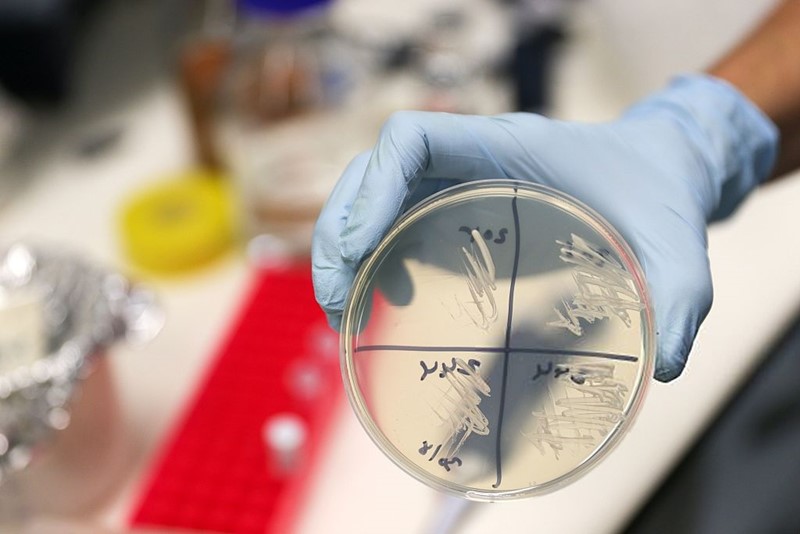Unveiling the unsung heroes of winemaking: the fascinating role of yeast
Join us on a journey into the microscopic world of yeast, the alchemists of nature, as we explore their pivotal role in transforming grape juice into the wine we cherish

In the intricate ballet of winemaking, an unsung hero is the yeast – microscopic organisms that breathe life into every bottle. Yeast, often taken for granted, plays a pivotal role in transforming grape juice into the vino we savor. This article delves deep into the world of yeast, its function in winemaking, and the fascinating science behind it.
Yeast: Nature's Alchemist
Yeast belongs to the fungal kingdom and is a unicellular organism found abundantly in our environment. They're critical for their ability to break down or transform substances through fermentation, a process ubiquitous in human cuisine.
In the realm of winemaking, yeasts are paramount. They shoulder the responsibility of fermenting most of the sugars present in grape juice or must. Notably, they can endure high concentrations of alcohol and sulfurous anhydride, conditions found during the wine fermentation process.
However, the mechanism through which this legion of tiny beings converts juice into wine remains an enigma for many. Even though human intervention oversees the process, the actual transformation is a testament to nature's wonders.
Decades of Yeast Study
Over the past sixty years, renowned vineyards worldwide have cataloged yeast species. With advances from the 1980s, yeast strains have been studied through genetic content analysis. This has led to significant progress in tracking their evolution from vineyard to the finished bottle.
While grapes' outer layer may seem to be relatively yeast-deficient, ranging from 1,000 to 100,000 yeasts per berry, it's vital to put it in perspective. A drop of seawater can contain around 5 million unicellular organisms.
Various yeast types inhabit grapes, but many aren't prolific fermenters. Species like Rhodotorula, Kloeckera apiculata, Candida, and Pichia don't ensure stable alcoholic fermentation. In contrast, Saccharomyces cerevisiae, though not abundant on grapes, is the fermentative species par excellence in oenology. It ensures wine quality and stability and is also responsible for fermenting other products like bread, beer, and cider.
The most vital yeasts in winemaking belong to the Saccharomycetaceae family, home to many species under the genus Saccharomyces. They majorly contribute to turning grape juice into wine.

Saccharomyces cerevisiae: The Fermentation Maestro
While numerous strains and variants exhibit unique characteristics, Saccharomyces cerevisiae, colloquially known as baker's yeast, overshadows them. Despite the myriad species, most yeasts outside the Saccharomyces genus are detrimental to winemaking, with a few exceptions.
Yeasts can naturally occur in the must, or they can be introduced artificially. The latter are usually selected, dried yeasts in powdered form. In fermenting must, Saccharomyces cerevisiae quickly becomes dominant, especially in the presence of sulfites. Thus, ironically, the best yeast for flawless winemaking relies on sulfites to do its job efficiently.
Differences among yeast species are primarily morphological and physiological. Modern DNA analysis has simplified strain identification, focusing mainly on varieties of Saccharomyces cerevisiae with distinct oenological properties.
The Lifecycle of Yeast in Winemaking
Just as all living beings consume nutrients and excrete waste, so do yeasts. They feed on the sugars and some acids present in grape juice, excreting gas and alcohol. This consumption and excretion, in essence, define the fermentation process.
During alcoholic fermentation, several biochemical phenomena impact the wine's composition. These include glyceropyruvic fermentation, homolactic fermentation, malic acid degradation, amino acid catabolism and anabolism, and the metabolism of sulfur compounds.
Mastering winemaking could be described as overseeing this microscopic community. It starts with selecting the dominant strain for fermentation while ensuring others remain dormant or are eradicated. Key aspects of this process include temperature control, sulfite usage, and the inherent properties of the yeasts and their enzymes.
Killer Yeasts
Some yeast strains, termed 'killer' yeasts, secrete a protein damaging to 'sensitive' strains, destroying them within hours. There are also 'neutral' yeasts that neither produce toxins nor are affected by the killer factor.
Identified since 1963, yeast strains can be classified based on their tolerance to the killer effect, though it isn't the only determinant of their efficacy. The killer protein is neutralized by bentonite and quickly deactivated above 32°C or in the presence of tannins.
In sum, yeasts are the linchpin in the intricate art of winemaking. Their capacity to transform grape sugars into alcohol, combined with the expertise of vintners, gives birth to the diverse and vibrant world of wines. With every sip, one partakes in a legacy of nature's wonder and human ingenuity.
Founded in 2007, Vinetur® is a registered trademark of VGSC S.L. with a long history in the wine industry.
VGSC, S.L. with VAT number B70255591 is a spanish company legally registered in the Commercial Register of the city of Santiago de Compostela, with registration number: Bulletin 181, Reference 356049 in Volume 13, Page 107, Section 6, Sheet 45028, Entry 2.
Email: [email protected]
Headquarters and offices located in Vilagarcia de Arousa, Spain.